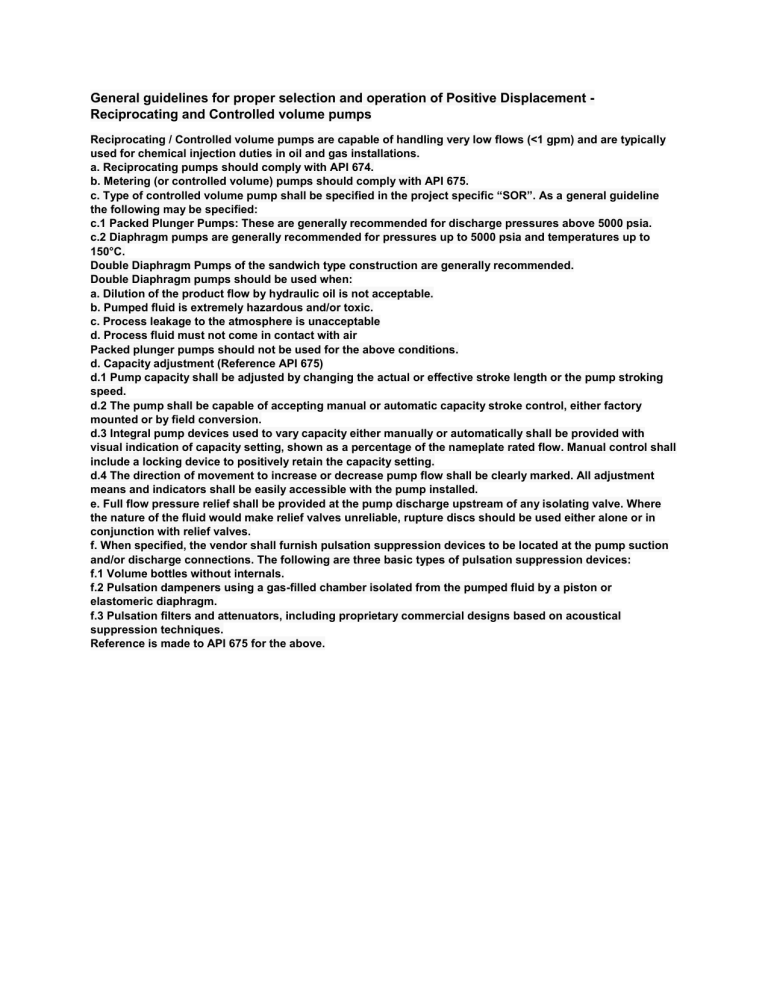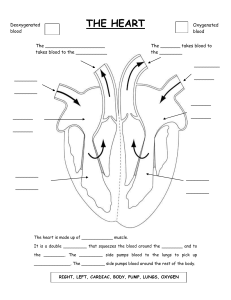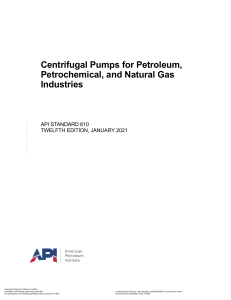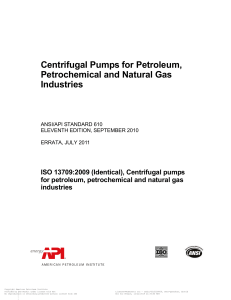
General guidelines for proper selection and operation of Positive Displacement Reciprocating and Controlled volume pumps Reciprocating / Controlled volume pumps are capable of handling very low flows (<1 gpm) and are typically used for chemical injection duties in oil and gas installations. a. Reciprocating pumps should comply with API 674. b. Metering (or controlled volume) pumps should comply with API 675. c. Type of controlled volume pump shall be specified in the project specific “SOR”. As a general guideline the following may be specified: c.1 Packed Plunger Pumps: These are generally recommended for discharge pressures above 5000 psia. c.2 Diaphragm pumps are generally recommended for pressures up to 5000 psia and temperatures up to 150°C. Double Diaphragm Pumps of the sandwich type construction are generally recommended. Double Diaphragm pumps should be used when: a. Dilution of the product flow by hydraulic oil is not acceptable. b. Pumped fluid is extremely hazardous and/or toxic. c. Process leakage to the atmosphere is unacceptable d. Process fluid must not come in contact with air Packed plunger pumps should not be used for the above conditions. d. Capacity adjustment (Reference API 675) d.1 Pump capacity shall be adjusted by changing the actual or effective stroke length or the pump stroking speed. d.2 The pump shall be capable of accepting manual or automatic capacity stroke control, either factory mounted or by field conversion. d.3 Integral pump devices used to vary capacity either manually or automatically shall be provided with visual indication of capacity setting, shown as a percentage of the nameplate rated flow. Manual control shall include a locking device to positively retain the capacity setting. d.4 The direction of movement to increase or decrease pump flow shall be clearly marked. All adjustment means and indicators shall be easily accessible with the pump installed. e. Full flow pressure relief shall be provided at the pump discharge upstream of any isolating valve. Where the nature of the fluid would make relief valves unreliable, rupture discs should be used either alone or in conjunction with relief valves. f. When specified, the vendor shall furnish pulsation suppression devices to be located at the pump suction and/or discharge connections. The following are three basic types of pulsation suppression devices: f.1 Volume bottles without internals. f.2 Pulsation dampeners using a gas-filled chamber isolated from the pumped fluid by a piston or elastomeric diaphragm. f.3 Pulsation filters and attenuators, including proprietary commercial designs based on acoustical suppression techniques. Reference is made to API 675 for the above.







